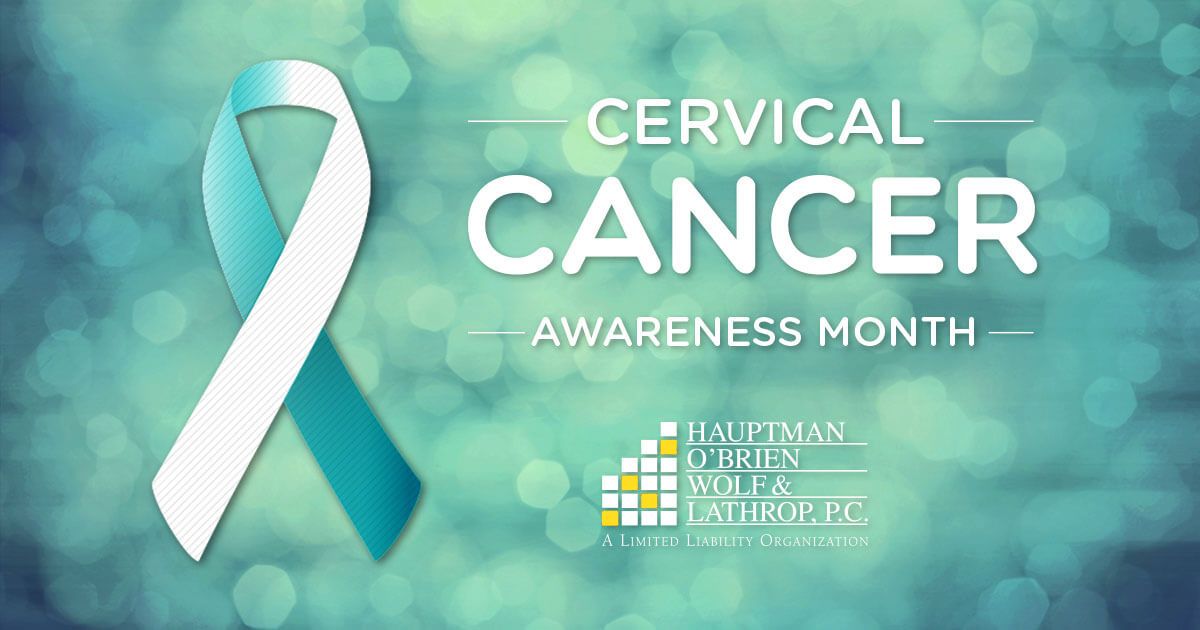
Are you cervix-aware?
Perhaps not. Thirty years ago, cervical cancer was one of the leading causes of cancer death among American women. But that’s steadily changed over the last few decades, with the fatality rate now half what it once was.
As a result of that success, we don’t hear as much about the cervix anymore. But we should.
In an effort to promote progress in cervical care, the U.S. Congress has officially declared January as Cervical Health Awareness Month. All month long, media outlets and blogs like ours have been shining an invaluable spotlight on the issue of cervical cancer, which remains a significant health threat for women despite the progress we’ve made.
But Cervical Health Awareness Month isn’t only about cancer. In giving that important issue the attention it deserves, we should also keep in mind the many other cervical injuries and illnesses afflicting women across the country today.
Accordingly, we would like to take a broader look at cervical health, including the telltale symptoms of cervical damage and the most common causes of cervical injury.
We believe in the power of awareness, and it’s our hope that understanding cervical health will lead to more widespread treatment, prevention, and recovery — including financial recovery for those women who sustain cervical injuries as a result of someone else’s negligence.
The Most Common Cervical Injuries
Cervical damage includes not only cervical cancer but also any strain, injury, illness, or abnormality involving the cervix or cervical canal. These include:
- Cervical cancer
- Cervicitis (inflammation of the cervix)
- Cervical polyps
- Cervical stenosis (abnormally narrow cervical canal)
- Cervical agenesis (congenital failure of the cervix to develop)
- Cervical ectropion (sometimes called “cervical erosion”)
Signs and Symptoms of Cervical Injuries
Many cervical conditions present with similar symptoms, which makes it difficult to reach an early diagnosis based on symptoms alone. In other cases, women may have cervical damage without any symptoms at all (this is especially true in early-stage cancer).
Common symptoms of Cervical Cancer include:
- Vaginal bleeding in between menstrual periods
- Vaginal bleeding after intercourse
- Vaginal bleeding at any time in postmenopausal women
- Pain during intercourse, especially pelvic pain
- Watery or bloody vaginal discharge (often with a foul odor)
Common symptoms of Cervicitis include:
- Any of the symptoms listed for Cervical Cancer above may also indicate a less serious diagnosis of cervicitis.
- Frequent, painful urination
- Vaginal discharge that is pus-like and yellow, green, or brown in color
Common symptoms of cervical polyps:
- Any of the symptoms listed for Cervical Cancer above may also indicate a less serious diagnosis of cervical polyps.
- Very heavy menstruation during a woman’s regular period
- White or yellow mucus
“Cervical stenosis” affecting the uterine cervix should be distinguished from “cervical stenosis” affecting the spine (an unrelated condition). In the vaginal context, symptoms of cervical stenosis include:
- Infection
- Sporadic bleeding
- Pelvic pain
- Infertility
- Endometriosis
Cervical agenesis and Cervical ectropian can be diagnosed with clinical imaging and observation. They may also present with:
- Bleeding
- Vaginal discharge
- Pelvic pain
- Absent or obstructed menstrual flow (in the case of agenesis)
HPV as a Cause of Cervical Cancer
Scientists still aren’t entirely sure what causes cervical cancer, but they do know that HPV plays a role. Human Papillomavirus, or HPV, is the name that doctors give to a closely related group of viruses that can sometimes cause warts or cancer (especially cervical cancer).
HPV is spread through any intimate skin-to-skin contact and is the most common sexually transmitted infection (STI, or STD). In fact, it is believed that nearly all sexually active people — men and women — will acquire HPV at some point in their lives.
In many cases, HPV is self-limiting and relatively harmless. Some men and women will develop warts, including genital warts. Less commonly, HPV can cause cervical cancer in women. Scientists don’t yet understand why the same HPV virus can lead to cancer in some patients and not in others.
Fortunately, routine screening and vaccination can prevent most cases of cervical cancer today. It is recommended that women receive the HPV vaccine between ages 9 and 26, preferably before they become sexually active. Experts also recommend that all women receive Pap tests every few years (beginning at age 21) to detect precancerous cervical conditions. Practicing safe sex is also known to reduce the risk of exposure to HPV. Additionally, we know that smokers may be at higher risk for developing cervical cancer.
Doctor Negligence and Medical Malpractice as a Cause of Cervical Injuries
What about other kinds of cervical injuries, though? What causes those?
Some are congenital, meaning they are present from birth, sometimes an unpreventable consequence of a baby’s natural development. In many cases, though, trauma or damage to the cervix happens because of doctor error. An Omaha medical malpractice attorney can help those victims recover compensation for their medical expenses, pain, suffering, and loss.
Common causes of cervical injuries related to medical malpractice include:
- Error during surgery (including colposcopy, cryosurgery, cone biopsy, laser treatment, or other cervical procedures)
- Accidental trauma to the cervix during childbirth or any medical procedure
- Failure to identify or treat vaginal infections
- Failure to diagnose any cervical condition
- Radiation mistakes in the course of treating cervical cancer
- Negligent administration of certain contraceptive medications
Additionally, childbirth is a common cause of cervical injuries. Doctors and nurses sometimes make mistakes during pregnancy, labor, or delivery. These mistakes can lead to long-term, catastrophic, or even fatal injury to mother or child. Birth injuries related to the cervix include:
- Premature birth or miscarriage as a result of “incompetent cervix” (weak cervical tissue in the uterus)
- Vaginal tears (“vaginal laceration”)
- Cervical tears
- Trauma inflicted by improper use of forceps or vacuum extraction
- Cervical trauma caused by excessive force, improper delivery, or shoulder dystocia
Medical malpractice is sometimes to blame for cervical cancer too. Specifically, healthcare professionals may be held liable for:
- Failure to diagnose cervical cancer
- Mistakes made in the course of cancer treatment
- Failure to diagnose HPV and/or provide proper HPV treatment
- Errors in medication or radiation
- Failure to properly instruct or advise a patient
Get Help from an Omaha Medical Malpractice Attorney
As January comes to a close, we hope that women throughout Nebraska and all across the country will remember to keep a watchful eye on their cervical health. Cervical Health Awareness Month is truly an observance to keep in mind all year long. Proper screening and prevention, coupled with a healthy lifestyle, could save your life.
If you or a loved one has suffered cervical injuries as a result of doctor negligence, you may be entitled to substantial compensation under the law. An Omaha medical malpractice attorney at Hauptman, O’Brien, Wolf & Lathrop, P.C. can help.
To schedule a free consultation with an experienced Omaha medical malpractice attorney, contact our office as soon as possible. Remember: time limits apply to medical malpractice claims.
Our services are available to injured people throughout Nebraska, Iowa, Missouri, Kansas, Colorado, South Dakota, and beyond. Give us a call today.



I can’t thank Jeremy, Nicole, and Andrea enough for the way they handled my case. After my car accident, I felt overwhelmed and unsure of what to do, but their team stepped in with confidence, compassion, and clear communication every step of the way.
They explained things in a way that actually made sense, fought hard to make sure I was treated fairly, and never made me feel like just another case number.
If you’re looking for attorneys who actually care and know how to get things done — these are your people